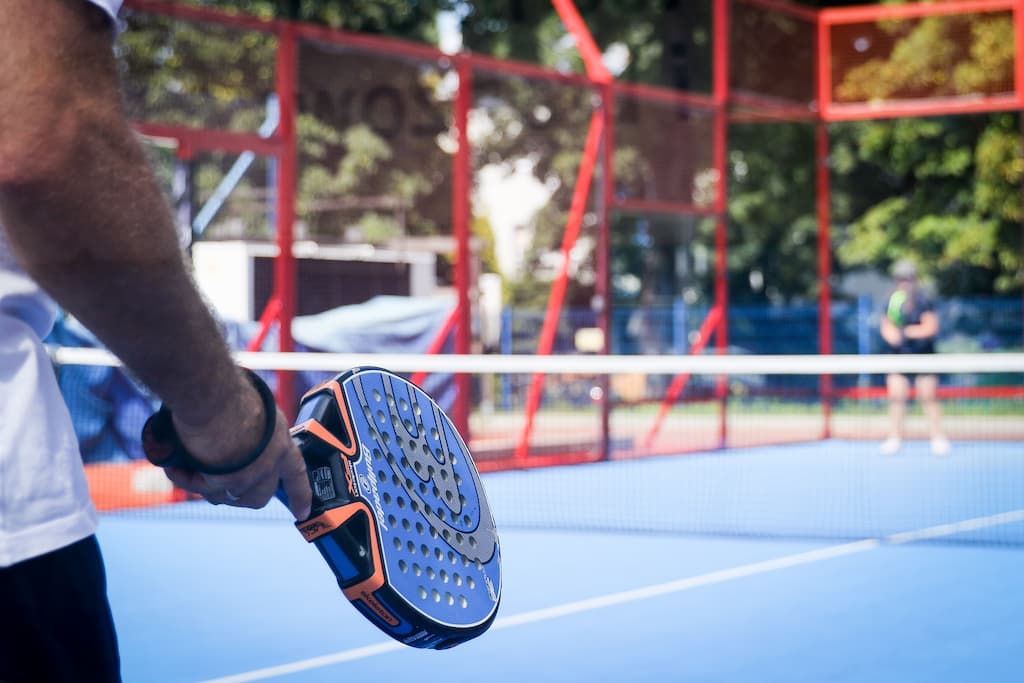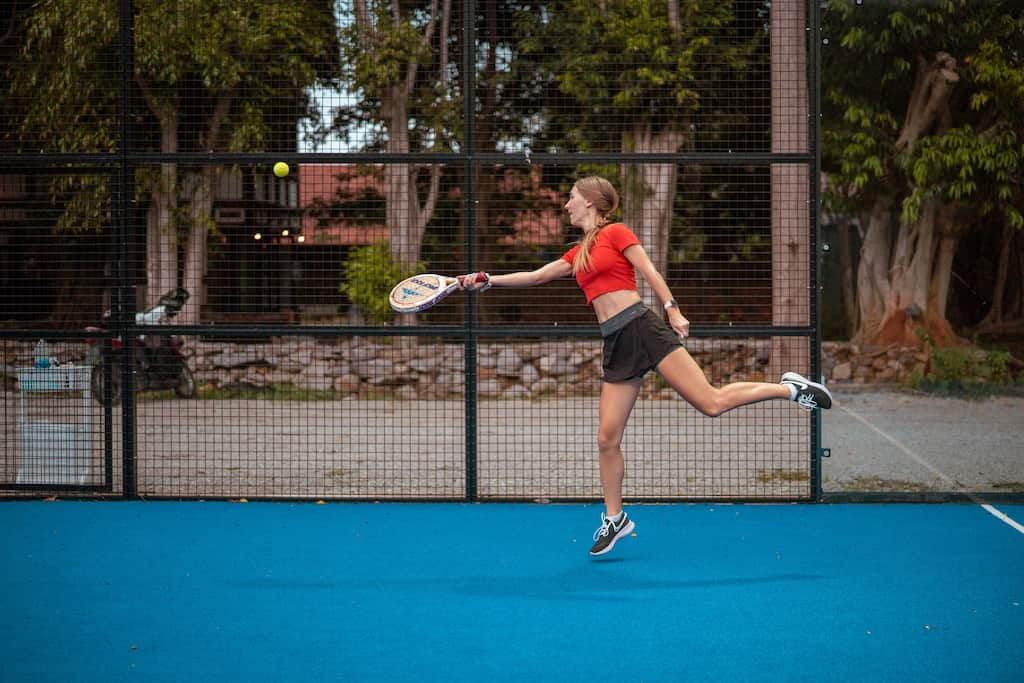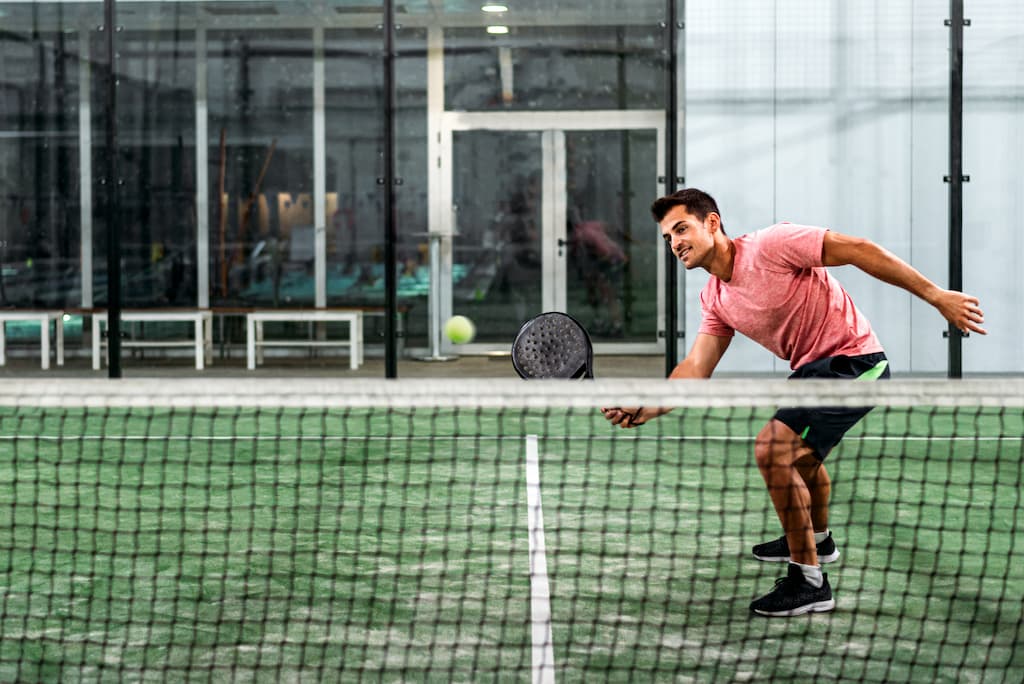The cornerstone of competitive Padel is dynamic movement—a symphony of agility, speed, and reflexes that turns good players into great ones. Mastery of movement in Padel is not just about reaching the ball; it’s about doing so in a way that allows you to execute shots with precision, conserve energy, and prepare for the next shot. Employing a split step as they ready for the incoming ball, players can maintain a ready position with knees slightly bent, ensuring they are poised for action.
Agile players who can change direction quickly, sprint to the ball in moments, and react instinctively to their opponents’ shots have a substantial edge. As such, agility, speed, and reflexes are not just physical attributes but strategic tools that can dictate the pace and flow of the game. Proper footwork and maintaining a good posture are essential for minimizing the risk of making errors.
Key Takeaways
- Dynamic movement in Padel is crucial for executing precise shots, conserving energy, and preparing strategically for the next shot.
- Players with superior agility, speed, and reflexes can cover more ground and control the game’s pace, forcing opponents into difficult positions.
- These physical attributes are not just innate skills but can be strategically developed through proper footwork and footwork patterns to enhance in-game performance.
Understanding Padel Movement

Padel movement refers to the players’ ability to navigate the court effectively, which involves a mix of running, lateral steps, quick pivots, and sudden stops. Each component—agility, speed, and reflexes—serves a particular function.
Agility allows for swift changes in direction, essential for chasing down unexpected shots, facilitated by small steps and a closed stance when needed. Speed enables players to cover the court and reach the ball in time to execute a proper swing.
Reflexes are critical for quick volleys and defense, where reaction time can mean the difference between winning and losing a point. The strategic application of these components can put opponents at a disadvantage, forcing errors or creating openings to win points.
Agility in Padel
Agility is paramount in Padel due to the small court size and the fast-paced nature of the game. Most players must be adept at maneuvering around the court, often in tight spaces, and positioning themselves optimally for each shot.
Improving agility involves focused drills that enhance footwork, such as ladder drills and cone exercises, which simulate the rapid, multidirectional movement required in a match. Practicing these drills can lead to more fluid court coverage and better shot preparation, eventually becoming second nature as muscle memory.
Speed Development for Padel Players
Speed is a critical component that allows players to reach the ball more quickly, thus gaining valuable milliseconds to set up and execute shots. Developing speed is a multifaceted process that includes sprinting drills, resistance training, and plyometrics.
These exercises build fast-twitch muscle fibers, improving not only the speed at which a player can move but also the rapidness with which they can start and stop—key elements in the stop-and-go nature of Padel. Advanced players often integrate a cross step to maximize their explosive movement on the court.
Reflexes: The Key to Quick Reactions
Reflexes in Padel are the immediate responses to shots that come at the player with little warning, particularly during volleys and smashes. Enhancing reflexes involves both physical and cognitive training. Physical exercises, like reaction ball drills, improve the body’s response time, while cognitive training helps players read their opponents’ cues and anticipate the ball’s trajectory, leading to quicker and more effective responses.
Movement Patterns in Padel

Understanding and analyzing the common footwork patterns in Padel can significantly enhance a player’s efficiency on the court. By studying professional players’ movements, one can learn how to position oneself better, move less to conserve energy, and still cover the necessary ground. Strategies for optimizing movement involve understanding the geometry of the court, the physics of the ball, and the psychology of the opponent, allowing players to make smarter moves with less effort.
Conditioning for Better Movement
Effective movement in Padel is supported by a solid foundation of physical conditioning. Agility, speed, and reflexes can all be enhanced through targeted exercise regimens. Cross-training activities, such as cycling, swimming, or HIIT workouts, can improve cardiovascular health and muscular endurance, contributing to better movement on the court. Additionally, proper nutrition and adequate recovery are crucial for maintaining peak physical condition and ensuring that the body’s movements remain dynamic and precise throughout the entirety of a match or tournament.
Common Mistakes and Corrections
In the realm of Padel, players often stumble upon a variety of movement errors that can hinder their performance. These include inadequate footwork leading to delayed positioning, overrunning the ball which results in loss of balance and control, and ineffective court coverage that wastes energy and time. Recognizing and admitting these faults is a critical first step toward enhancing one’s game.
Video Analysis
Video analysis emerges as a powerful tool in this context, offering a clear lens through which players can observe and understand their movement patterns. By watching replays, they can pinpoint exact moments where their movement falters.
Coach’s Insights
Coaches play a pivotal role in this corrective process, providing tailored advice on improving balance, perfecting footwork, and making incremental adjustments to a player’s on-court movement strategy.
Advanced Movement Strategies
For the elite Padel player, advanced movement strategies involve an intricate dance of well-timed steps, pivots, and explosive transitions that are often the hallmark of high-level play. Beyond the physical, there’s a significant psychological component to movement in Padel. Mental agility, the ability to predict an opponent’s next move and the quick decision-making that follows, is just as crucial as physical quickness. Players at the top of their game master the art of unpredictability, often incorporating deceptive movements to disguise their play until the crucial moment, thus catching opponents off guard. This level of strategic movement requires not only physical prowess but also an astute understanding of the game’s psychology.
Conclusion
Throughout this exploration of dynamic movement in Padel, we’ve delved into the integral roles of agility, speed, and reflexes. We’ve examined methods to enhance these attributes, correct prevalent errors, and integrate sophisticated movement tactics. The path to excelling in Padel demands a consistent commitment to developing these skills. It’s an ever-evolving journey that challenges players to push beyond their limits and continually refine their game. As players traverse this path, they should keep in mind that each stride, each pivot, and each sprint is not just a part of the game but a step towards mastering the art of Padel. The journey is long, but for those passionate about their craft, every moment is an opportunity to grow and excel.
Frequently Asked Questions
What are the most common mistakes in Padel movement?
The most common mistakes in Padel movement are related to footwork and positioning. Players often fail to move their feet properly, leading to poor shot selection and execution. Additionally, players may not position themselves correctly on the court, leaving them vulnerable to shots that are difficult to return. Another common mistake is not anticipating the ball’s trajectory, which can result in being caught off guard and unable to make a proper shot.
How can I improve my positioning on the Padel court?
Improving your positioning on the Padel court requires practice and focus. You should always be aware of where your opponent is on the court and adjust your position accordingly. Additionally, you should keep in mind the court’s dimensions and the angles of your shots. It is also important to maintain a balanced stance and be ready to move quickly in any direction. Finally, you should always be prepared to adjust your positioning based on the situation, such as when your opponent hits a lob or a drop shot.

